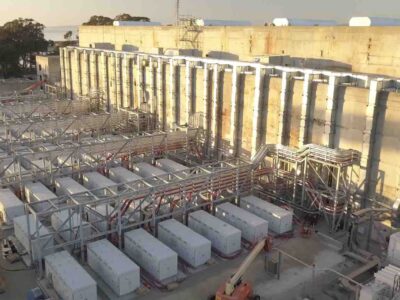President Joe Biden’s proposed $2 trillion infrastructure and economic recovery plan may prove beneficial not just for traditional roads and bridges, but also for clean energy and ESG companies, and as a result of the funds that invest in them.
After rejoining the Paris Agreement to mitigate global warming and setting a goal to achieve net-zero carbon emissions by 2050, the new administration’s wide-ranging proposal includes initiatives that specifically address these goals.

One of the plan’s targets is to allocate 40 percent of the benefits of clean infrastructure investments to disadvantaged communities. In addition to infrastructure spending to fix roads, bridges, highways, ports, airports, and transit systems, the proposal also aims to deliver clean drinking water, a renewed electric grid, an expansion of the electric vehicle supply chain, infrastructure, and jobs, as well as high-speed broadband to all Americans.
All of this is expected to provide a tailwind for companies and funds that focus on environmental, social, and governance (ESG) factors.
Todd Rosenbluth, head of ETF and mutual fund research at CFRA, said there are two drivers behind this. A narrower focus includes “the prioritization of combating climate change and focusing on alternative energy investments” which will further drive clean energy strategies and investments. These investments would impact U.S. and global companies that are connected to wind, solar and hydroelectric, and the funds that invest in those.
“Those ETFs were popular heading into the election and then soon after the election as investors had higher confidence that Biden might win and then if he did win, that combating climate change would be a priority,” he said. “But we still think there’s a lot of room for growth as investors further consider clean energy as a slice of their overall portfolio.”
Examples of ETFs in that space include First Trust Nasdaq Clean Edge Green Energy (QCLN), SPDR S&P Kensho Clean Power (CNRG), iShares Global Clean Energy (ICLN), and Invesco Solar (TAN).
“All of these had experienced inflows and I think are likely to be worthy of consideration as there is more clarity in terms of how this bill could become law. This is a longer-term investment trend that we think has legs,” said Rosenbluth.
The second driver is a broader view that includes the “E”, “S”, and “G” aspects of ESG, and funds that invest in those verticals. Rosenbluth said that many of these ETFs tend to be exclusionary in nature as opposed to inclusionary.
Broader ESG ETFs are focused on eliminating companies that are poor in one or more ESG factors. Examples include eliminating fossil fuels, companies with poor manufacturing processes, or boards that are not diversified.
“Those ETFs have been gaining in popularity regardless of Biden, but are likely to gain further popularity,” he said. “The more being a good corporate citizen is being talked about and being legitimized, the more it’s likely to cause investors to think ‘can they have their portfolio matched in those values?’”
Broader ESG funds include iShares ESG Aware MSCI USA (ESGU), iShares ESG Advanced MSCI USA (USXF), Vanguard ESG US Stock (ESGV), and Xtrackers S&P 500 ESG (SNPE).
Rosenbluth also expects the administration to follow its infrastructure plan with an additional, separate proposal that will specifically focus on advancing clean energy and protecting the environment. He believes this will target industrial and materials companies that will help to build out the infrastructure.
An example of one of these ETFs is Global X US Infrastructure Development (PAVE), which focuses on companies involved in the production of raw materials, heavy equipment, engineering, and construction. Another example is First Trust Nasdaq Clean Edge Smart Grid Infrastructure Index (GRID). This fund tracks stocks involved in the electric grid, electric meters and devices, energy storage and management, networks, and enabling software used by the smart grid infrastructure sector.
“We think the long-term trends for clean energy and towards more environmentally friendly strategies is going to be favorable,” said Rosenbluth. “There’s going to be high demand for these products and for good reason. There’s investment merit behind many of these strategies.”
But, he pointed out that “many of them sound the same and investors should not just buy the cheapest or the largest one. They should look at the portfolio to understand what they’re getting and what they may be missing. So, a little bit of homework goes a long way.”





